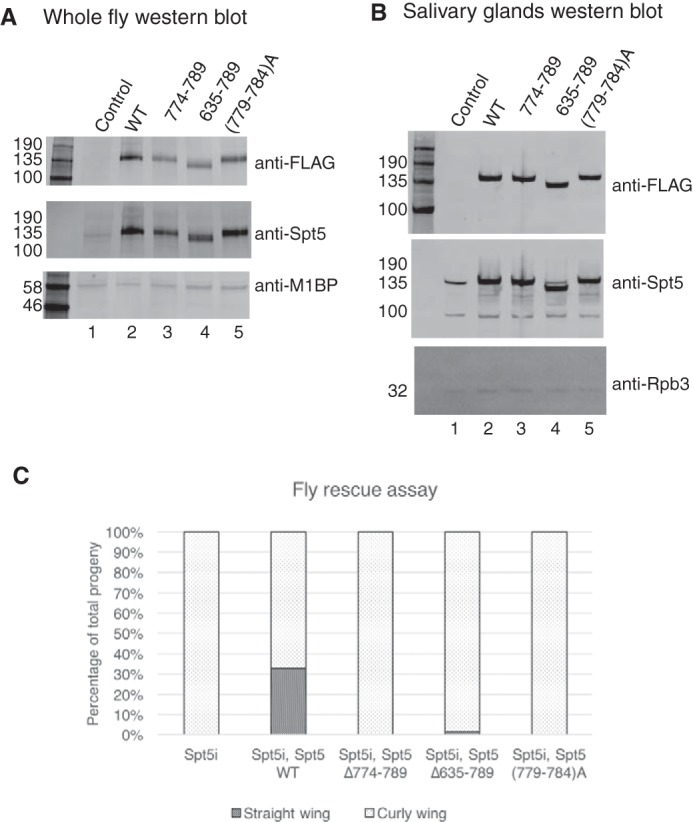FIGURE 7.

Mutations in KOW4-5 region of Spt5 fail to rescue the lethality caused by Spt5 RNAi in flies. A, Western blotting analysis for ubiquitous expression of Spt5 derivatives in flies. Whole fly samples were prepared from pupae of the matings between Spt5 derivative lines and an actin-Gal4 driver line (BDSC 4414). BDSC 4414 alone was used as a negative control that does not ectopically express Spt5 derivatives. FLAG antibody detects ectopically expressed Spt5 derivatives. Spt5 antibody detects both endogenous and ectopically expressed Spt5. M1BP antibody was used to detect M1BP as a loading control. B, Western blotting analysis for expression of Spt5 derivatives in salivary glands. Glands were isolated from third instar larvae of the matings between Spt5 derivative lines and a salivary gland Gal4 driver line (BDSC 1824). BDSC 1824 alone was used as a negative control. Rpb3 antibody was used to detect Rpb3 as a loading control. C, fly rescue assay for Spt5 derivatives. Spt5 lines with a Gal4-regulated Spt5 RNAi transgene or the Spt5 RNAi line alone were mated to actin-Gal4/CyO (BDSC 4414). In total, 158, 258, 157, 136, and 136 adult flies were generated from Spt5 RNAi, Spt5 WT, Spt5 Δ774–789, Spt5 Δ635–789, and Spt5 (779–784)A, respectively. The percentage of straight wing flies and curly wing flies in the progeny were calculated. Spt5 WT generated more than 30% of straight wing flies. Spt5 Δ635–789 generated less than 1.5% straight wing flies. Spt5 RNAi, Spt5 Δ774–789, and Spt5 (779–784)A generated no straight wing flies.
